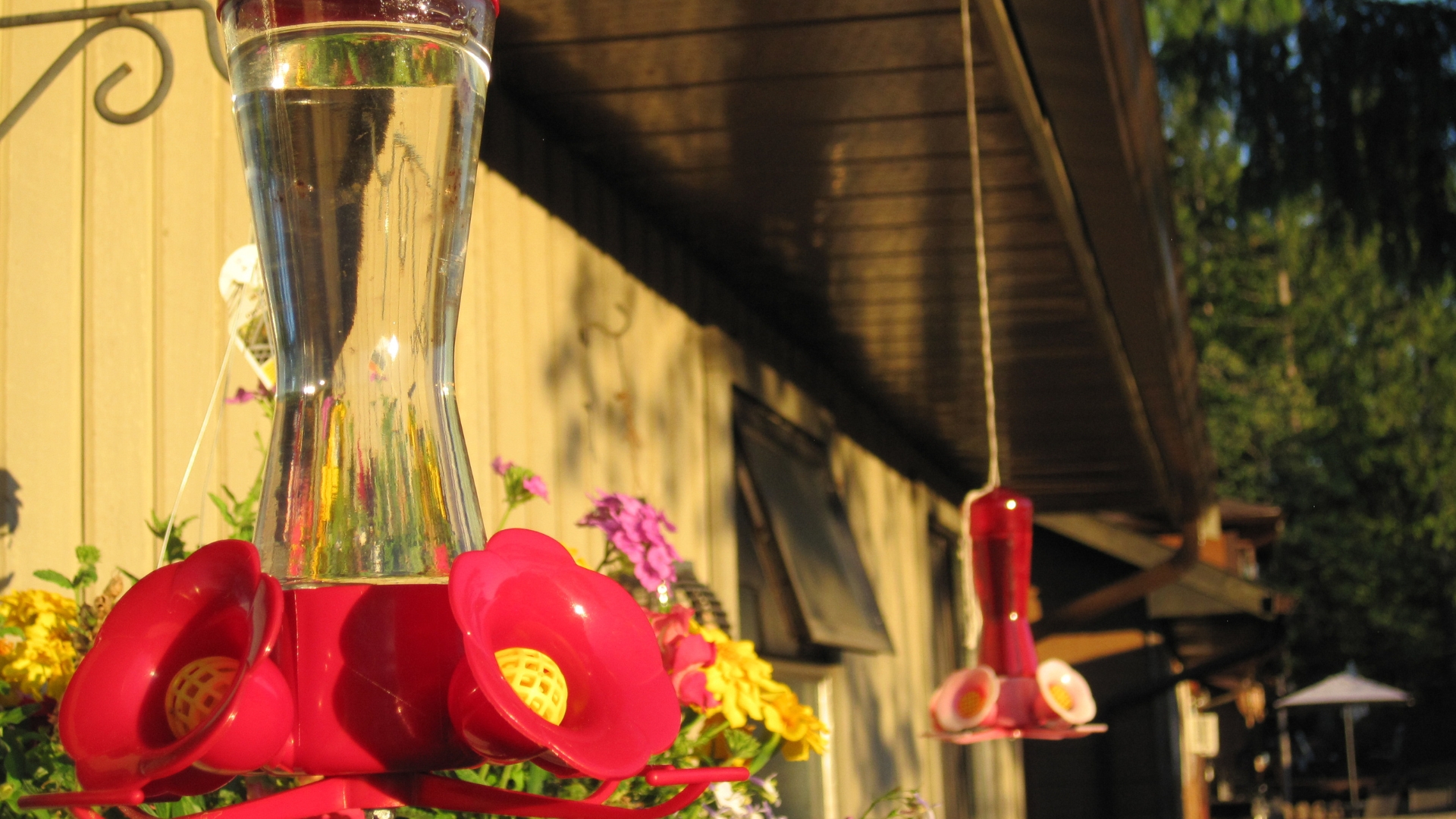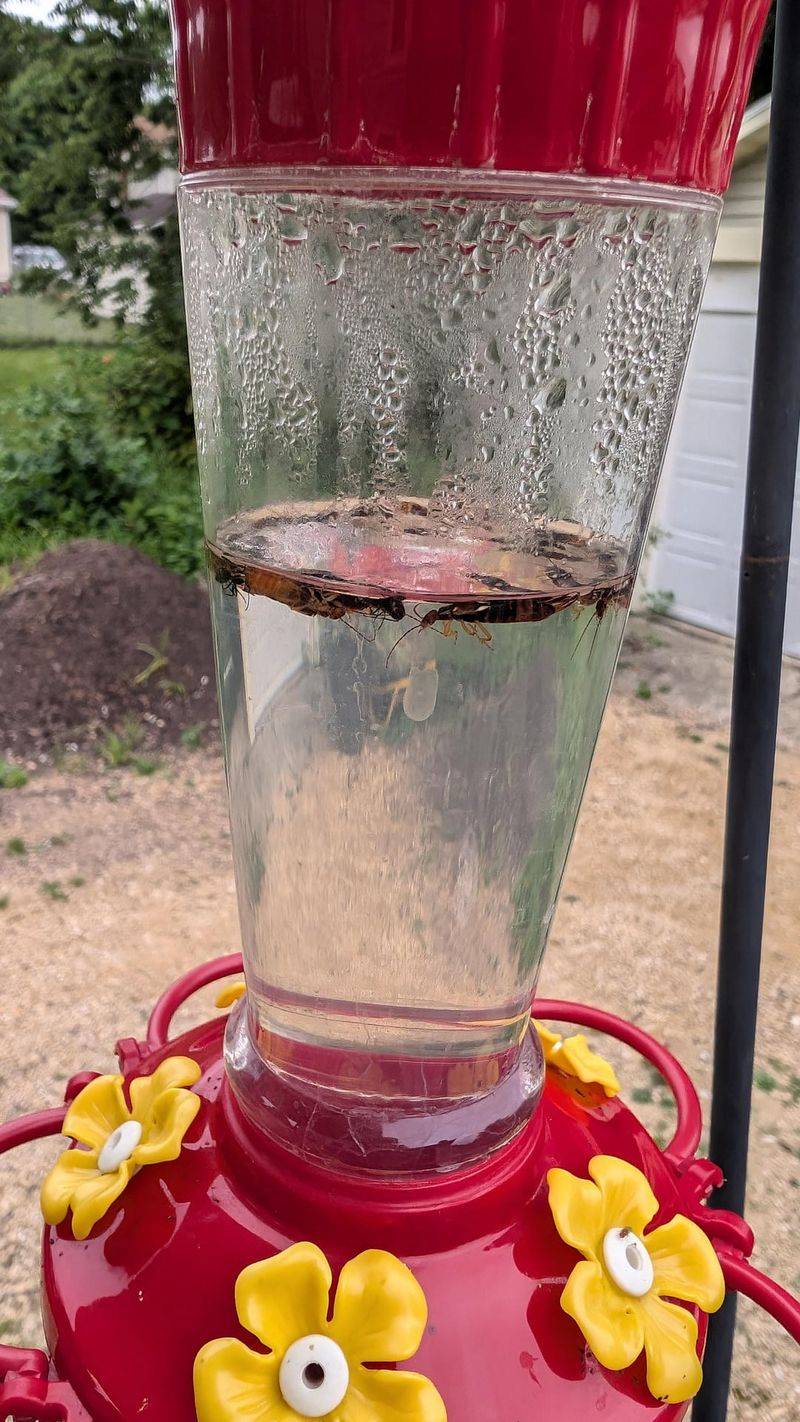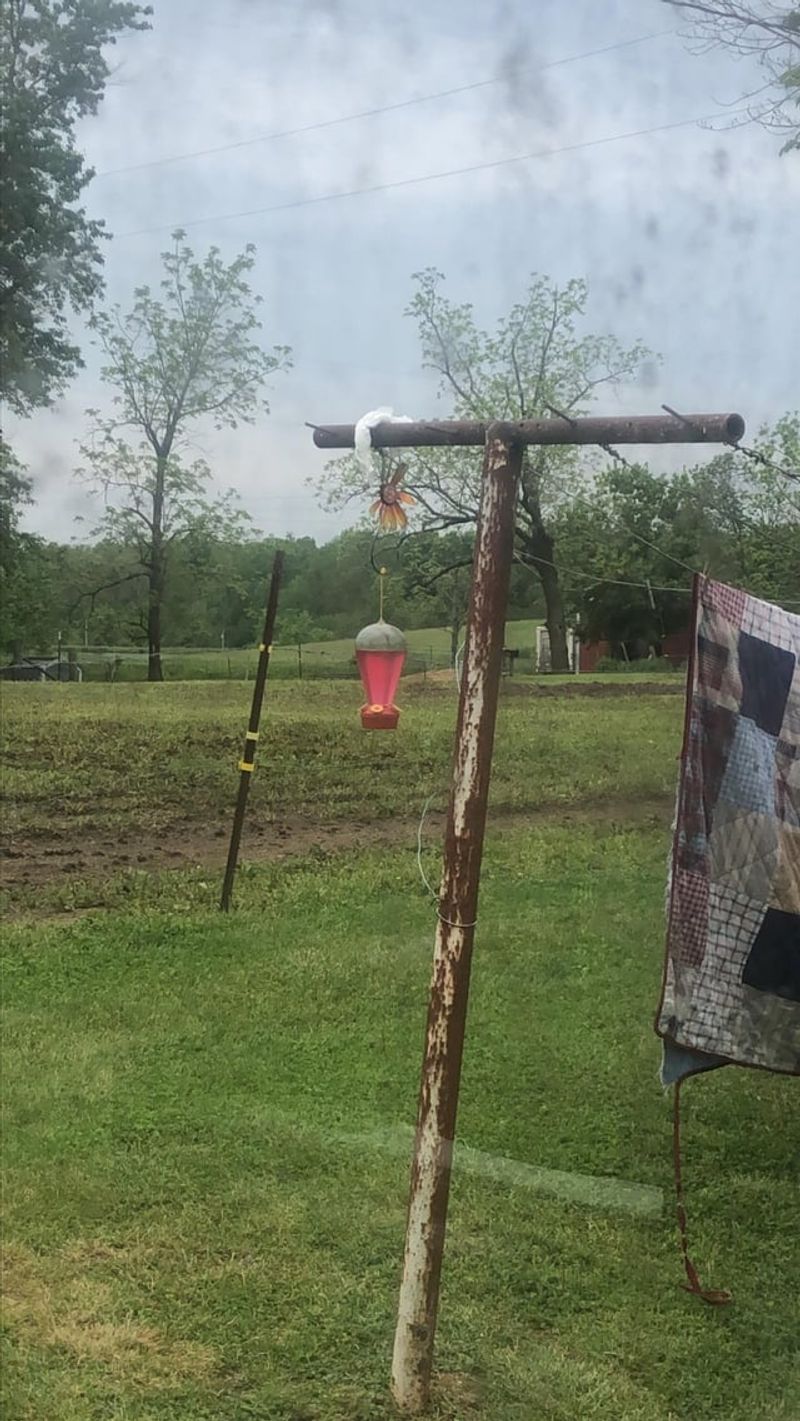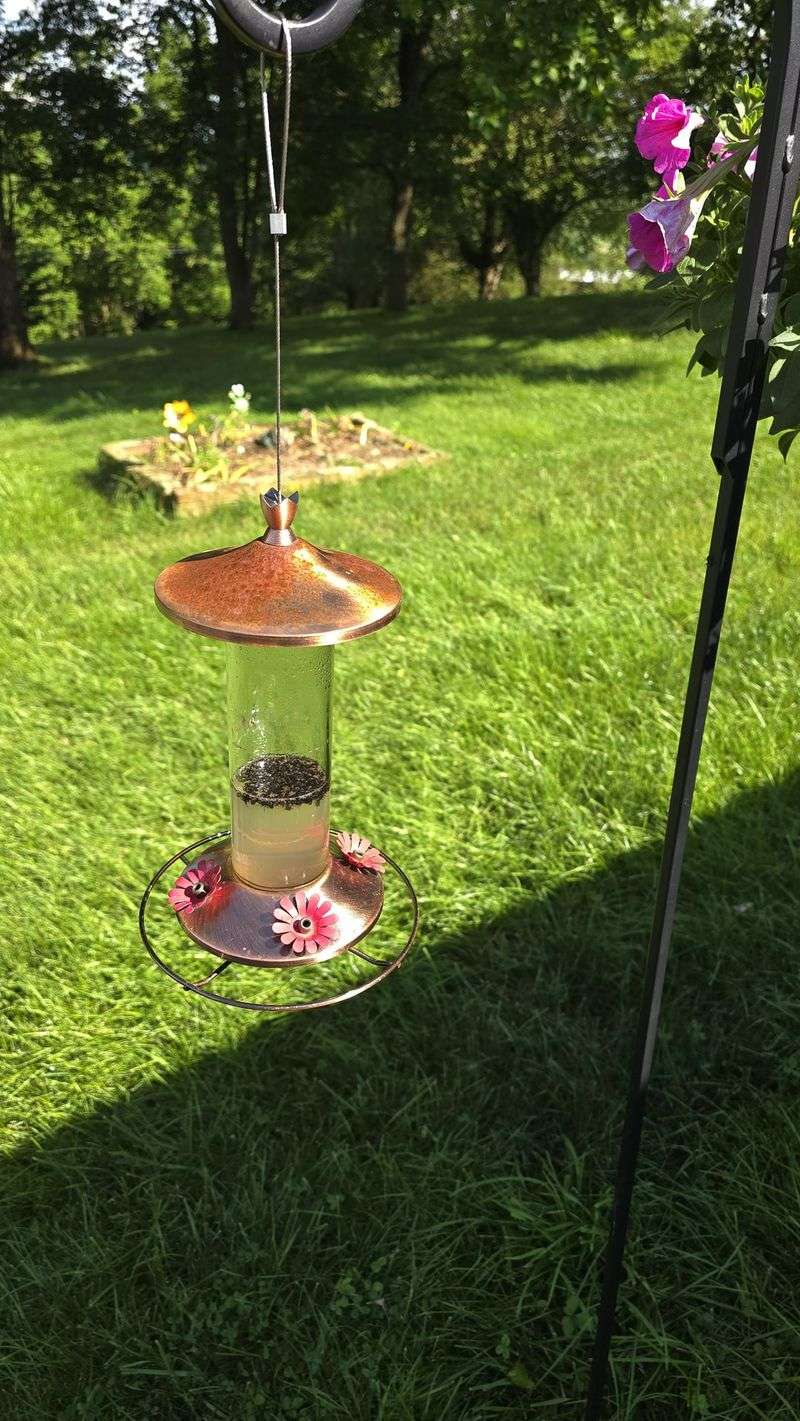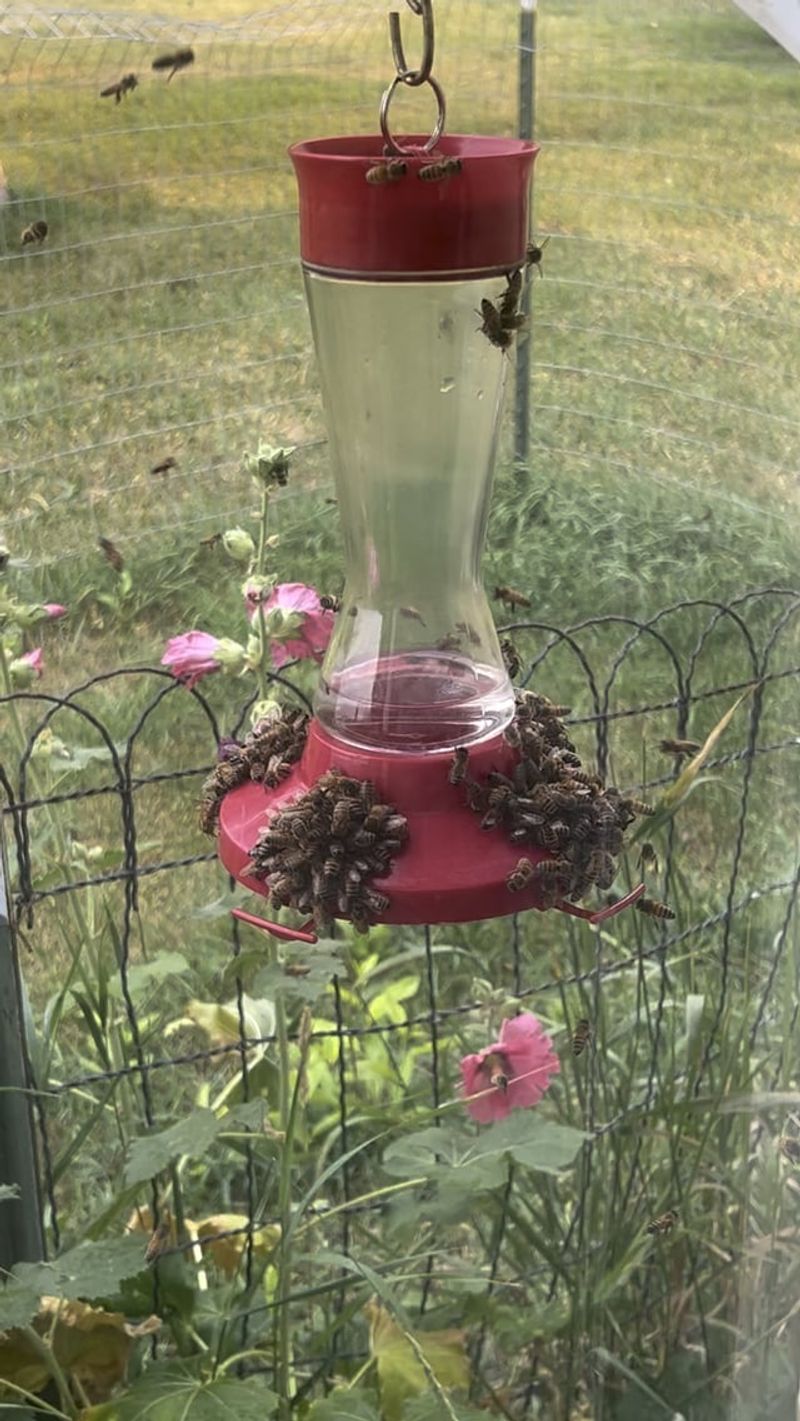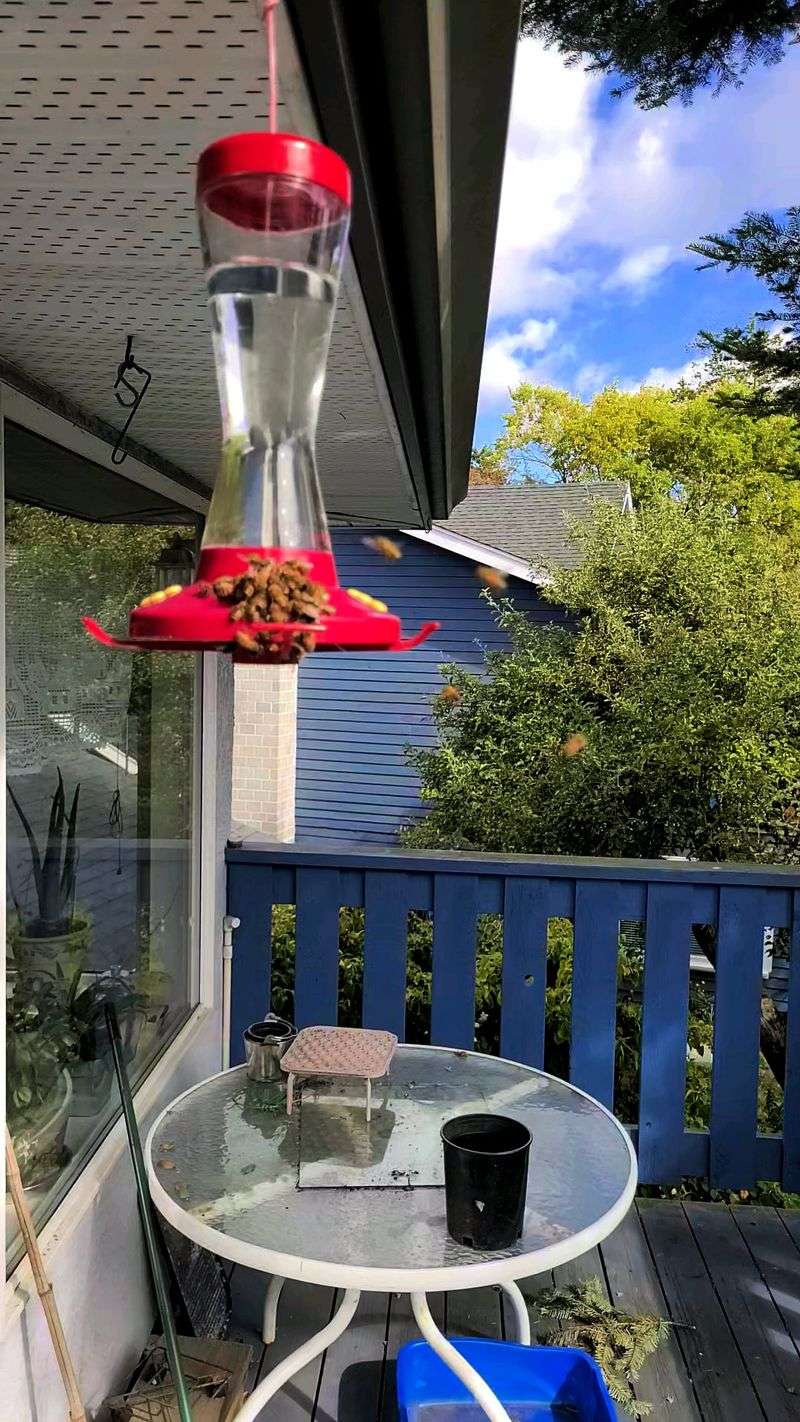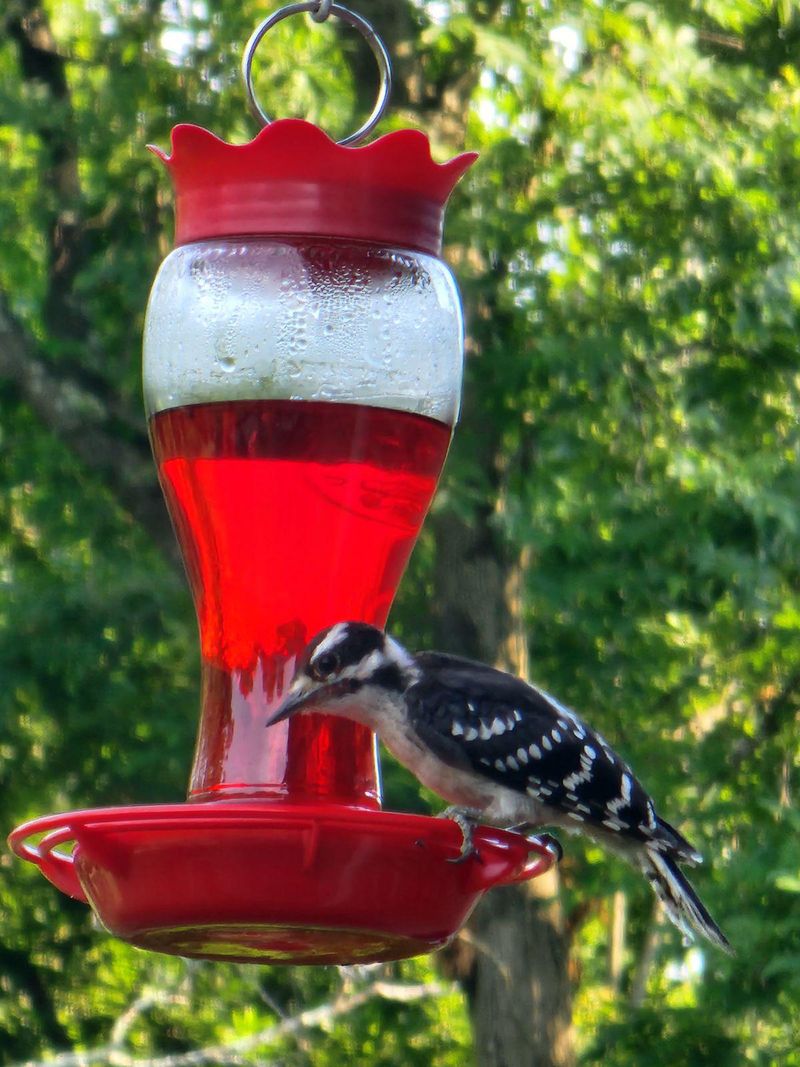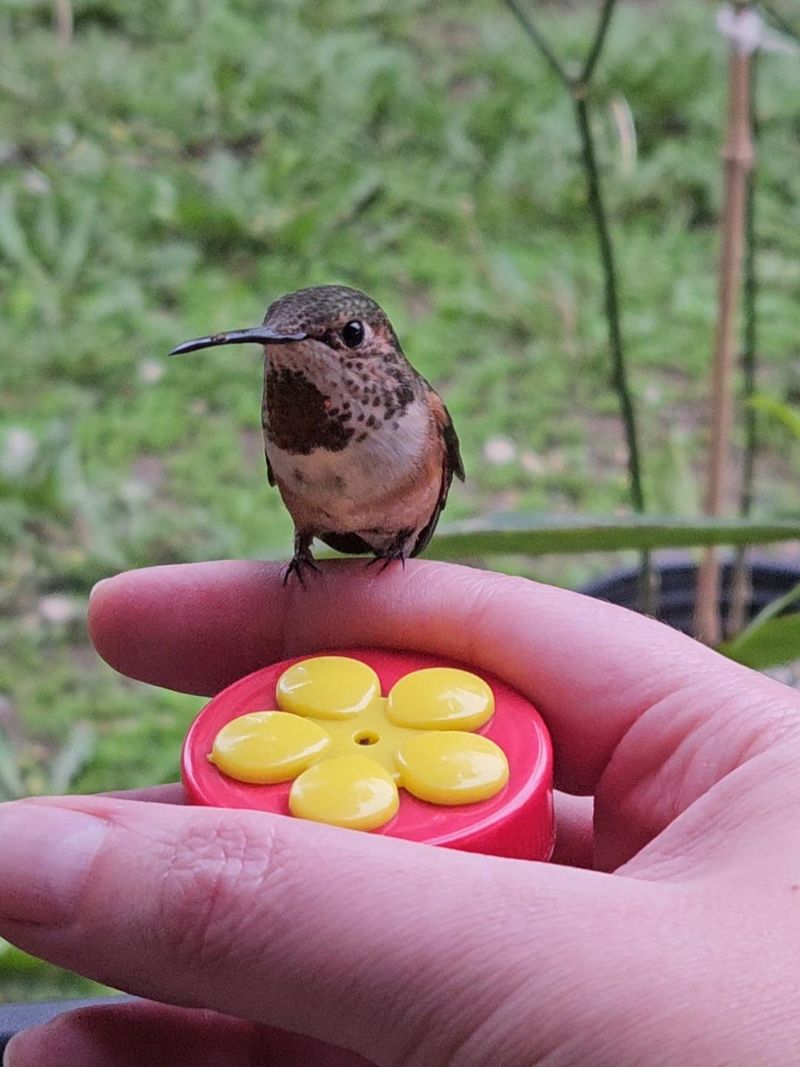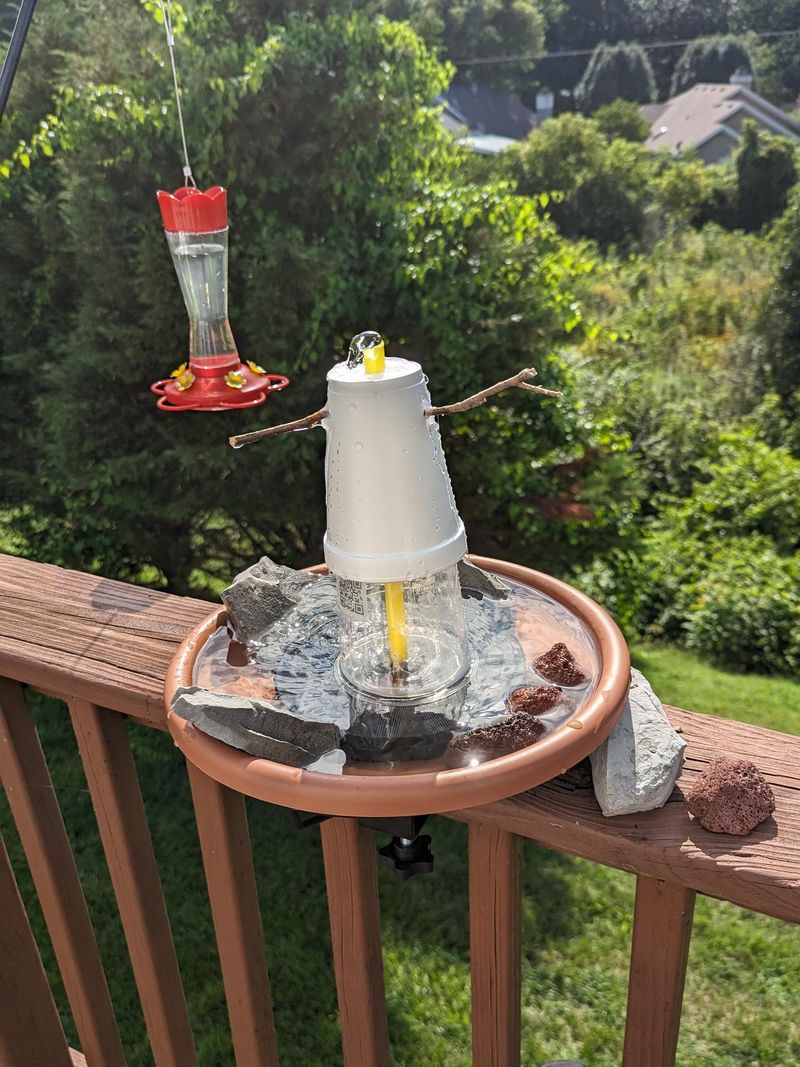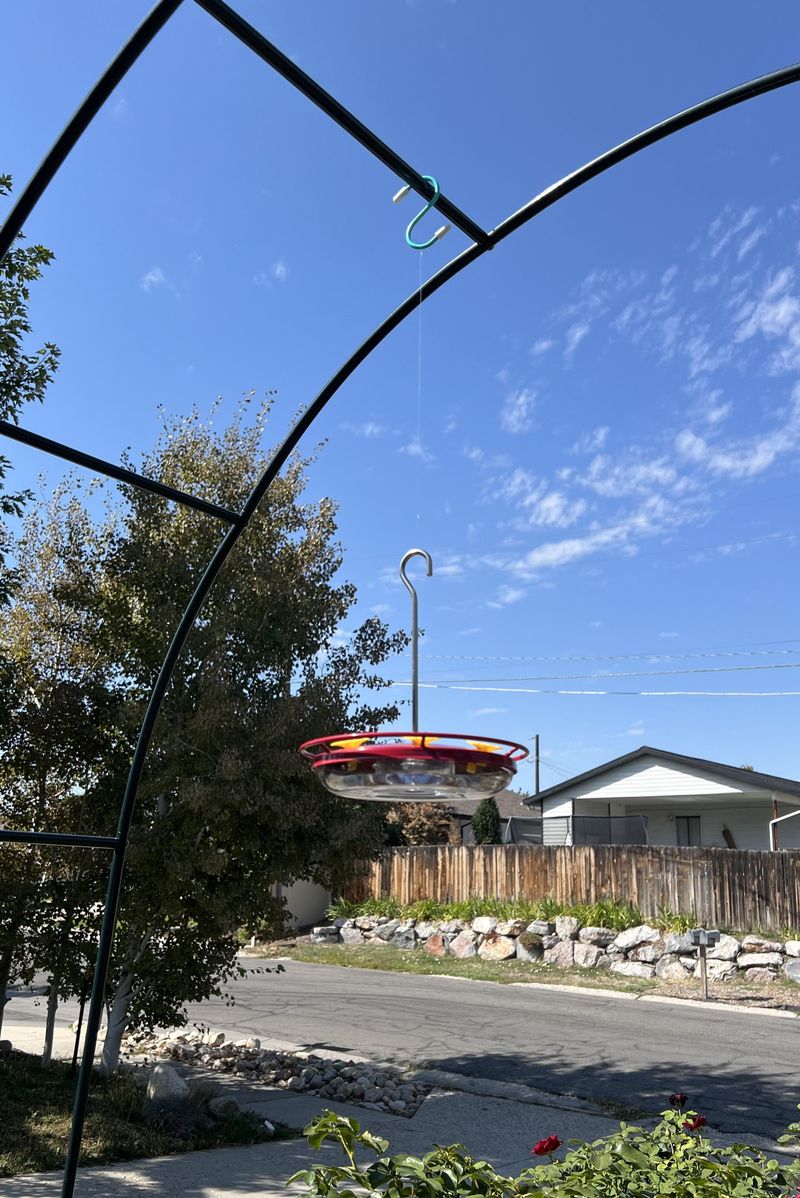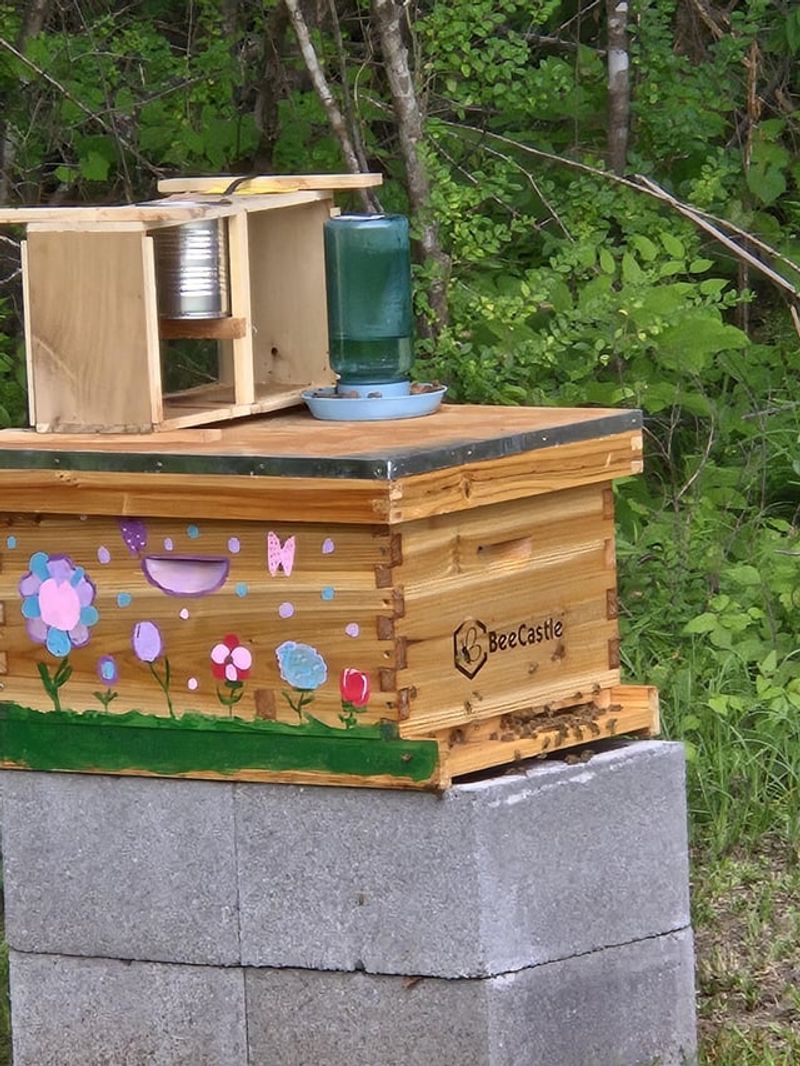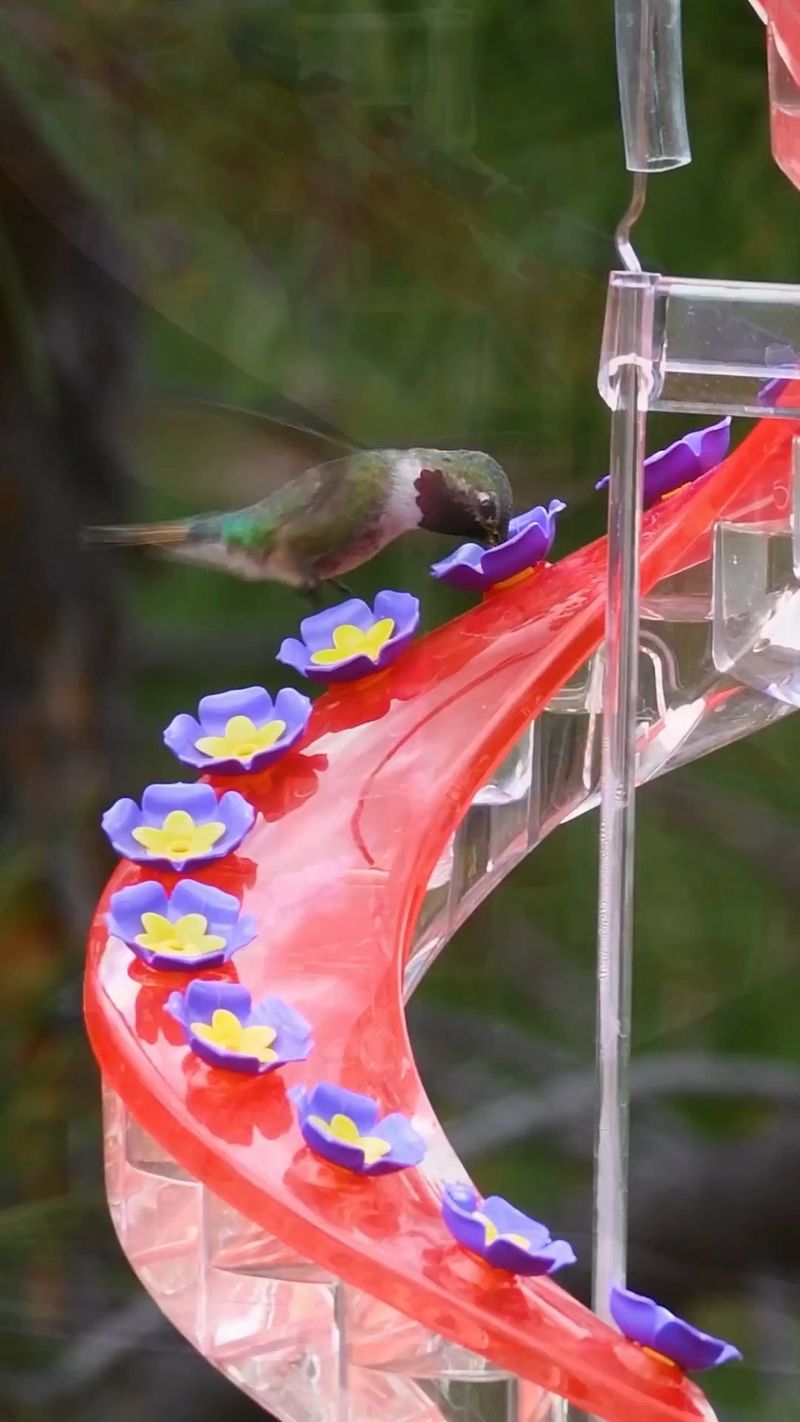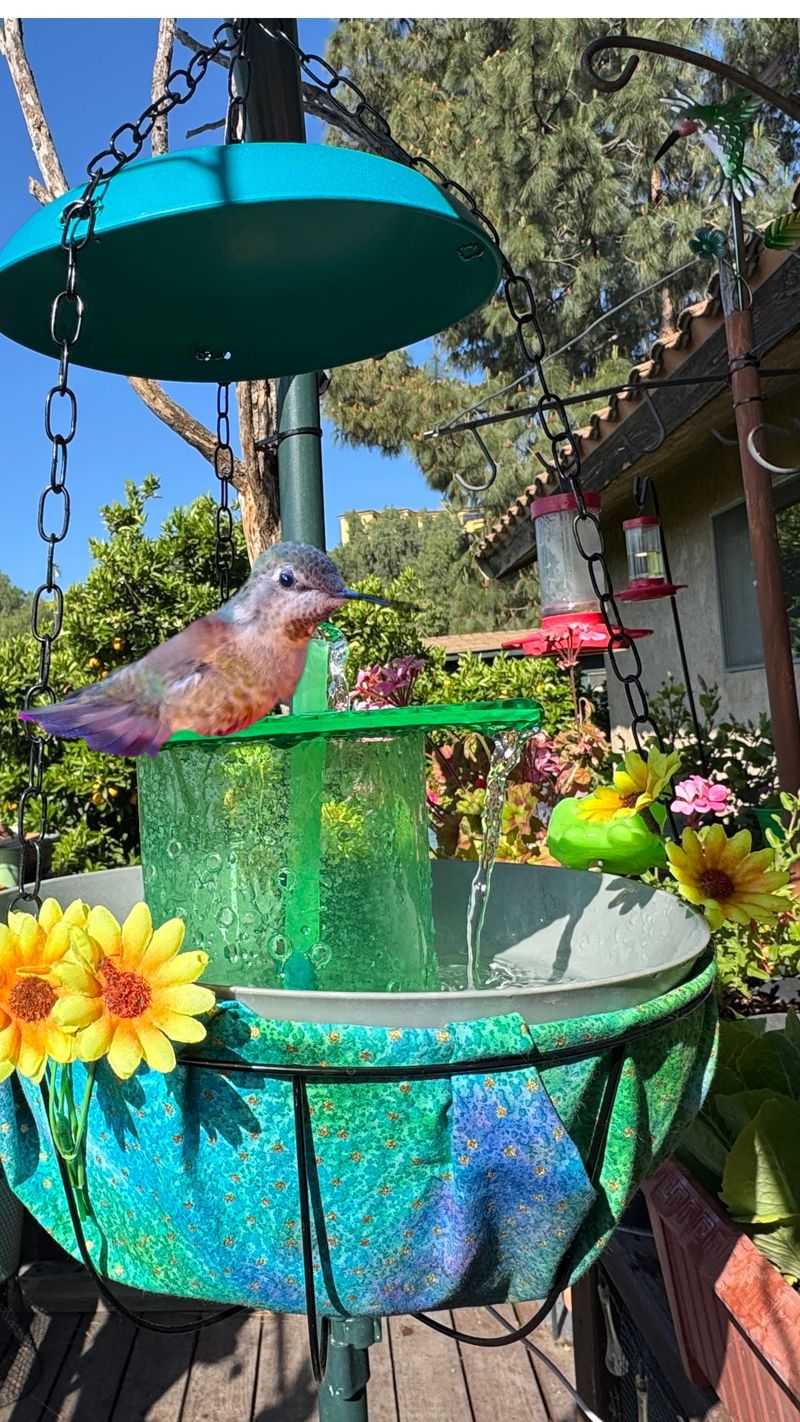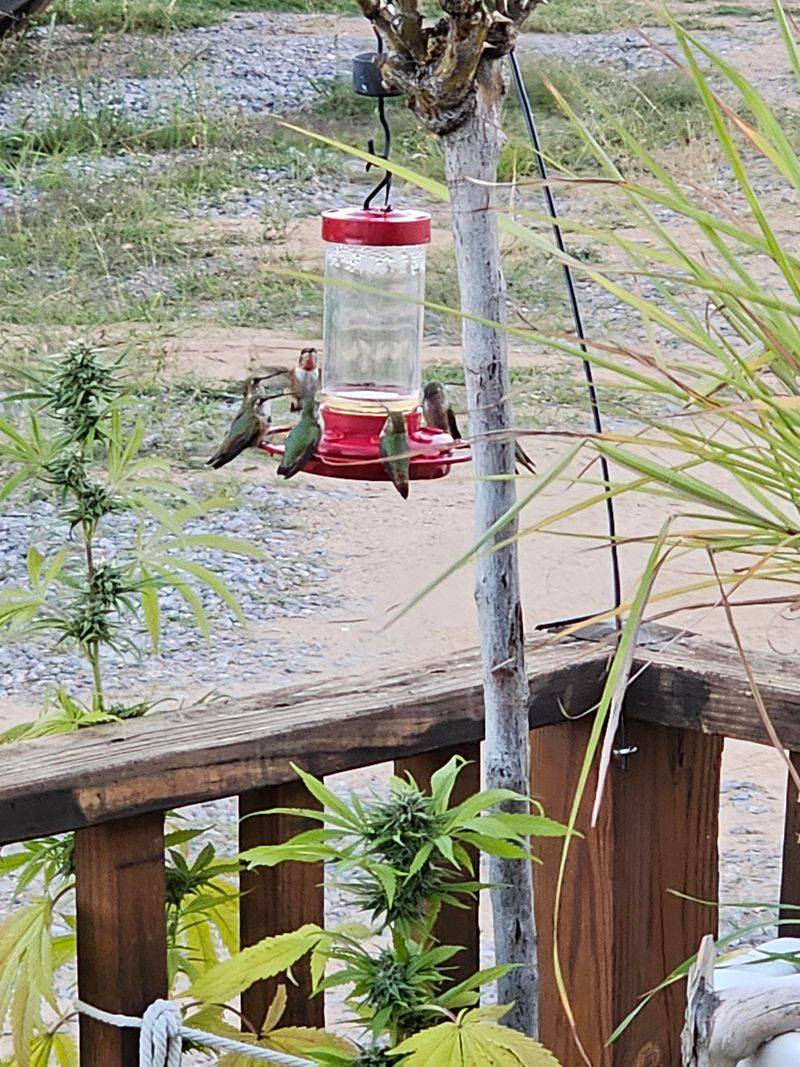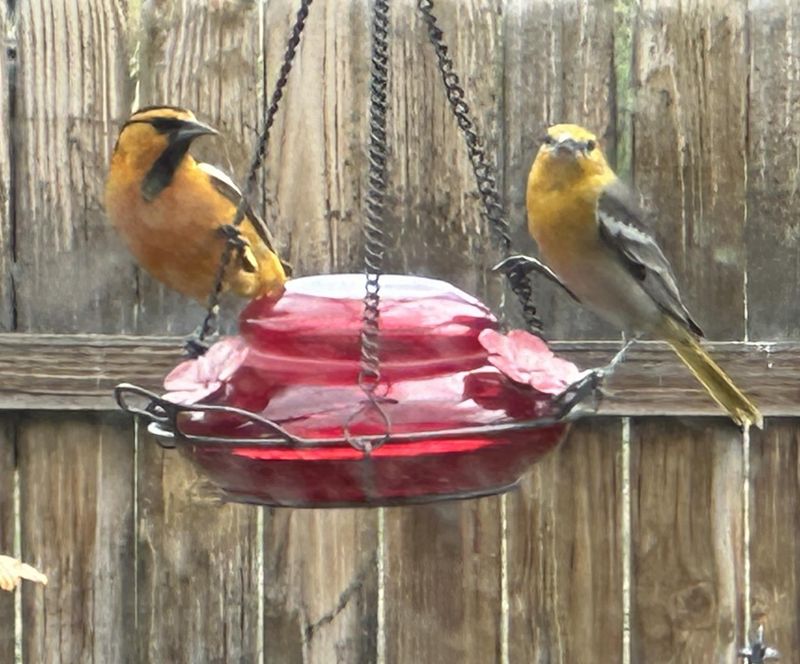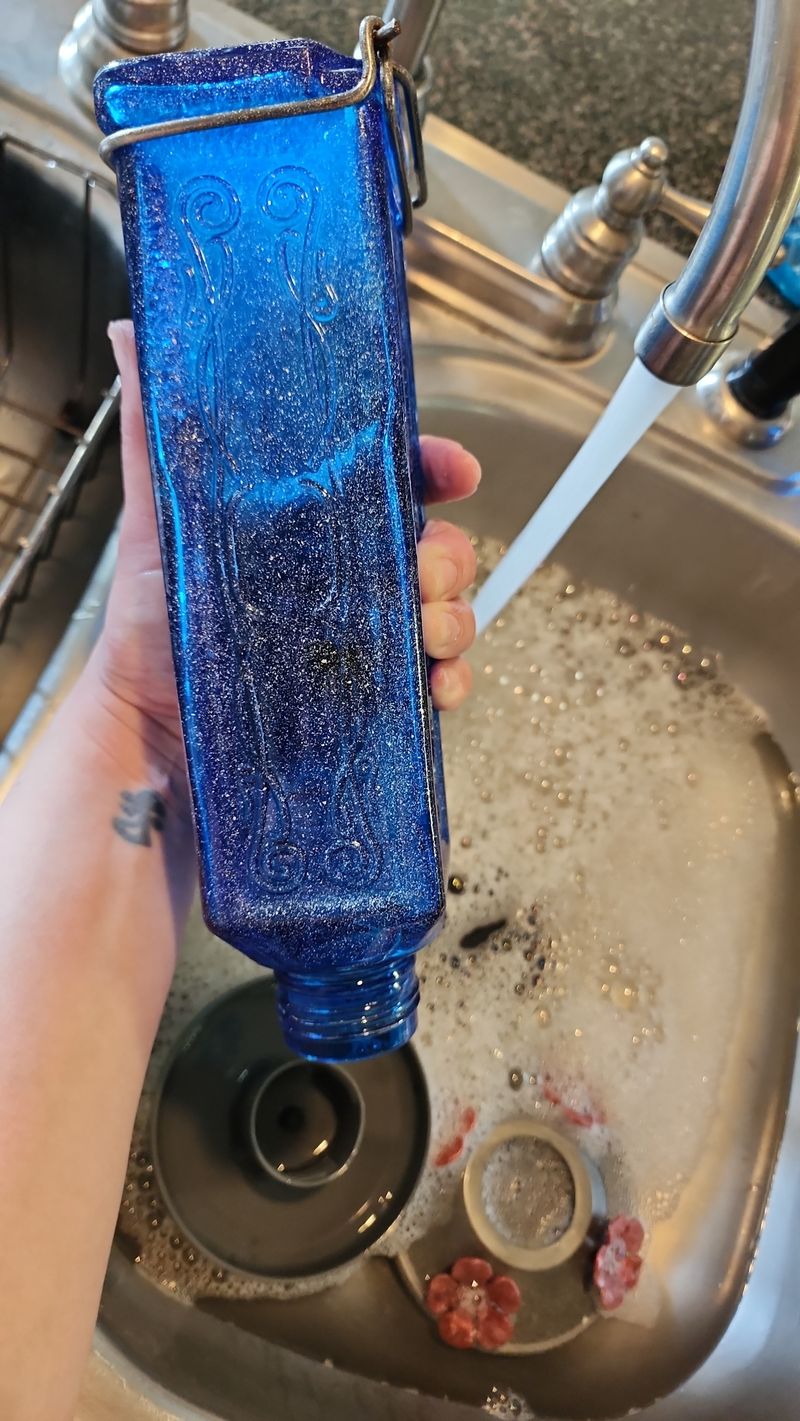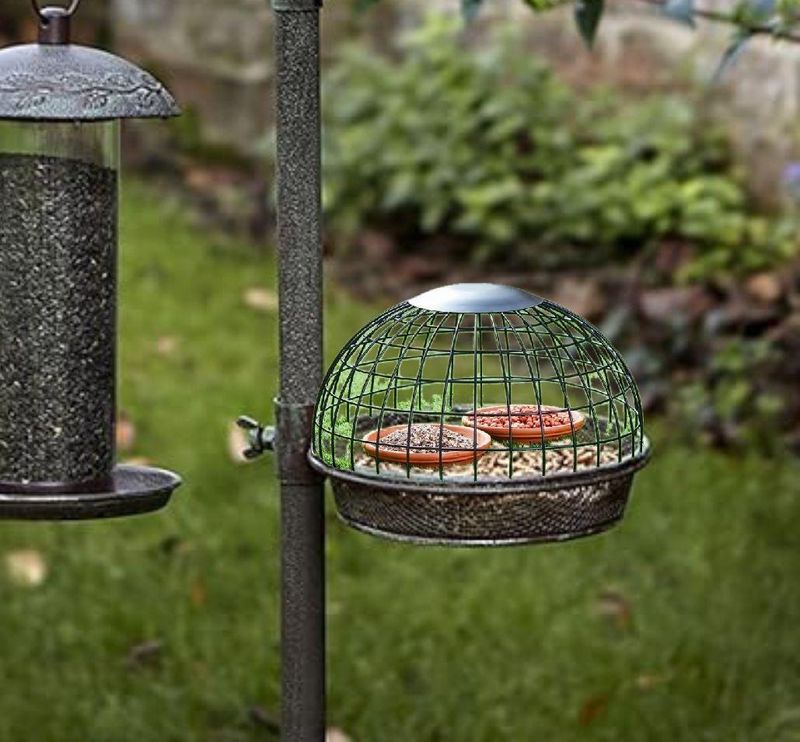Ants love sugar just as much as hummingbirds do—and they’re not shy about it. I’ve had feeders turn into ant highways overnight, and it’s beyond frustrating.
The good news? A few clever tricks can keep those pests away without bothering the birds. No chemicals, no fuss—just smart, simple fixes that actually work.
Let’s make sure your feeders stay for the hummers only!
1. Moat Guards
Those cup-shaped devices that hang above your feeder aren’t just for decoration! Filled with plain water, they create an impassable barrier that ants simply cannot cross to reach the sweet nectar below.
Remember to check your moat guards daily, especially during hot weather when water evaporates quickly. Many modern hummingbird feeders come with built-in moats, but you can easily add one to your existing setup for just a few dollars.
2. Fishing Line Hangers
Ants struggle to navigate thin fishing line! Hang your feeder with 10-pound test fishing line instead of wire or string. The smooth, thin surface confuses ants and makes it nearly impossible for them to maintain their grip.
Make sure to secure the line properly to support the weight of a full feeder. This simple swap costs almost nothing but creates a slippery highway that most ants can’t master, leaving your feeder ant-free without any chemicals.
3. Vegetable Oil Barriers
A little cooking oil goes a long way! Apply a thin coat of vegetable oil to the pole or hanging wire of your feeder using a cotton ball. The slippery surface prevents ants from gaining traction as they try to march toward the sweet nectar.
Just be careful not to get any oil on the feeding ports where hummingbirds drink. Reapply every few days or after rain washes it away. This pantry staple creates an effective barrier that won’t harm birds or beneficial insects.
4. Mint Spray Deterrent
Ants absolutely hate mint! Create a natural deterrent by steeping mint leaves in hot water, letting it cool, then spraying the solution on hanging wires and around (not in) your feeder. The strong scent confuses ant scouts and disrupts their chemical trails.
Fresh mint works best, but dried leaves or even mint extract will do in a pinch. Apply this aromatic barrier every couple of days for maximum effectiveness. Bonus: the mint smell is pleasant for humans but keeps those pesky ants at bay!
5. Ant Guards
Commercial ant guards are specially designed to keep your feeders ant-free! These plastic devices contain a non-toxic substance that safely deters ants without harming hummingbirds or other wildlife that might visit your garden.
Most ant guards simply snap onto existing feeders, making installation a breeze. Look for brands with good reviews and replace them according to package instructions. Unlike homemade solutions, these guards often last an entire season with minimal maintenance.
6. Petroleum Jelly Barrier
Vaseline creates a sticky obstacle course that ants avoid! Apply a thin ring of petroleum jelly around the hanging rod or pole of your feeder, creating a barrier that few ants can cross. The slippery substance traps them if they try.
Avoid getting any near feeding ports where birds drink. This method works in a pinch when you don’t have specialized equipment. Reapply every few days or after rain for continuous protection against those determined sugar-seeking invaders.
7. Relocate Regularly
Surprise those ants with a moving target! Relocating your feeder just a few feet away every couple of weeks disrupts established ant trails and confuses scout ants who can no longer find their way to the sugar source.
Try to hang the feeder from different trees or hooks around your yard. This simple strategy requires zero special equipment and works because ants rely heavily on chemical trails. When these trails lead nowhere, the colony gives up and searches elsewhere.
8. Cinnamon Powder Sprinkle
Ants can’t stand cinnamon! Sprinkle a small amount of ground cinnamon around the hanging area (not on the feeder itself). The strong smell disrupts their scent trails and acts as a natural deterrent that’s completely safe for birds.
After rain, you’ll need to reapply. This spice cabinet solution costs pennies compared to commercial products. Many gardeners swear by this aromatic barrier that keeps ants confused and searching elsewhere for their sweet fix.
9. Bay Leaf Bundles
Bay leaves aren’t just for cooking! Tie a few dried bay leaves with string and hang them directly above your hummingbird feeder. The natural oils in the leaves emit a scent that’s imperceptible to humans and birds but highly repellent to ants.
Replace the leaves every two weeks as the scent fades. This centuries-old kitchen remedy costs almost nothing but creates an invisible force field against ant invasions. Plus, it’s completely non-toxic and environmentally friendly.
10. Tanglefoot Trap
Tanglefoot is a commercial sticky substance that creates an impassable barrier for insects. Apply a thin band to the pole or hanger of your feeder (never on the feeder itself) to trap ants before they reach the nectar.
One application can last several weeks, even in rainy weather. While slightly messy to apply, the long-lasting protection makes it worth the effort. For easier cleanup later, apply the product to tape wrapped around the pole rather than directly on your equipment.
11. Diatomaceous Earth Barrier
Food-grade diatomaceous earth creates a deadly obstacle for ants! Sprinkle this powder around the base of your feeder pole or on the ground beneath hanging feeders. The microscopic sharp edges damage ants’ exoskeletons as they crawl through it.
Reapply after rain or heavy winds. This natural substance won’t harm birds or mammals but creates an effective barrier against crawling insects. Look for food-grade DE at garden centers—it’s inexpensive and works without chemicals.
12. Copper Tape Wrapping
Copper tape isn’t just for gardening! Wrap a strip around your feeder pole or hanger to create a natural repellent barrier. When ants touch copper, they receive a tiny harmless electrical charge that sends them scurrying in the opposite direction.
The tape adheres easily to most surfaces and weathers well outdoors. Available at most garden centers, this shiny solution provides long-lasting protection without chemicals. Many birders report success with this method even during peak ant season.
13. Talcum Powder Dusting
Baby powder creates a slippery surface ants can’t navigate! Dust a small amount of talcum powder on hanging wires or poles (away from feeding ports). The fine powder particles make it impossible for ants to maintain their footing.
Reapply after wind or rain washes it away. This bathroom cabinet solution costs little but effectively disrupts ant highways to your feeders. Be sure to use pure talcum powder without added fragrances that might deter the hummingbirds themselves.
14. Nectar Recipe Adjustment
Slightly reducing the sugar ratio in your nectar makes it less attractive to ants while still appealing to hummingbirds! Try a 4:1 water-to-sugar ratio instead of the standard 3:1 mix during peak ant season.
Hummingbirds will still visit regularly, but ants may be less motivated to make the journey. This simple adjustment requires no additional equipment or barriers. Remember to change your nectar every few days, especially in hot weather, to prevent fermentation.
15. Saucer-Style Feeders
Switch to saucer-style feeders where the nectar sits below the feeding ports! Unlike traditional bottle feeders, these designs naturally minimize drips and make it harder for ants to access the sweet liquid inside.
The feeding ports face upward, requiring hummingbirds to feed from above. This clever design naturally reduces ant problems without any additional barriers. Many modern versions are also easier to clean and fill than traditional models.
16. Clean Feeding Ports Daily
Sticky ports attract ants like magnets! Use a small bottle brush to clean feeding ports every evening, removing sugar residue before it can attract overnight ant scouts. This simple habit breaks the cycle of ant invasion.
Pay special attention to the underside of feeders where drips collect. Regular cleaning not only deters ants but also prevents mold that can harm hummingbirds. A quick 30-second wipe-down makes a world of difference in keeping your feeders ant-free.
17. Insect Netting Barriers
Fine mesh insect netting creates a physical barrier ants can’t penetrate! Cut a small piece and attach it to the hanging wire above your feeder using twist ties. Make sure to leave a hole just large enough for the wire to pass through.
Hummingbirds fly straight to the feeder while ants get stuck trying to navigate the mesh. This affordable solution from any garden center creates a physical blockade that stops even the most determined ant invaders in their tracks.

